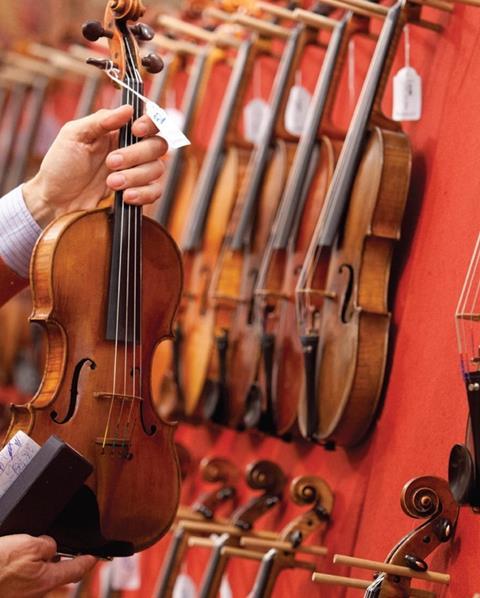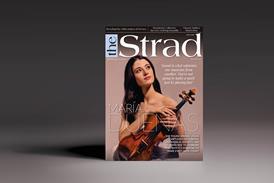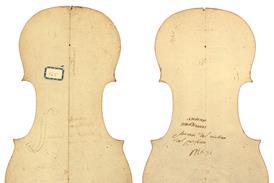Strad readers submit their problems and queries about string playing, teaching or making to our experts

Buying your first instrument at auction can be a nerve-racking process. Three directors of auction houses give tips to a student on the kind of things to look out for at a viewing.
Do you have a burning question about string playing, teaching or making that you need answering by people who really know? Email us at thestrad@thestrad.com.
The dilemma I have been studying for a couple of years at a conservatoire, and I am now looking for a good violin in the £12,000-£15,000 range. I’ve been to some viewing days and sale previews at various auction houses, and I’ve seen some nice instruments that I would consider buying for the right price. But I’m never sure exactly what qualities I should be looking for; cracks and chips are one thing, and so is the general state of the varnish, but could you recommend a few guidelines as to what marks out a good instrument from a mediocre one? Obviously tone quality and projection would be good to look out for; but since one only has a few minutes to ‘get to know’ an instrument, and the acoustics aren’t usually good enough to assess projection, I was thinking more about visual rather than sound qualities. RICHARD GREEN, TUFNELL PARK, LONDON, UK
TIM INGLES Choosing the right instrument is a very personal decision, so it is not easy to be objective about the qualities that define a good instrument. Practically all instruments have damage of some kind, but many musicians would rather own a Stradivari with a replacement front and a hundred cracks than a modern violin in perfect condition, so there are no hard and fast rules. However, there are certain basic guidelines that apply to any purchase, whether through an auction house or a dealership.
With a budget of around £15,000 you will find the selection at auction is much wider than through a shop, but you do need to understand a little about how auctions work. Once you have found an instrument you like, presumably by trying it at the auction house, ask to speak to the expert, not just the salesperson. Ask why the instrument is described as it is, and which other experts have seen it. Often in the sub-£20,000 price range, instruments will not have a definite attribution, so ask about whether there is general agreement between experts about where, when and by whom it was made. Ask about its history – is it being sold by a retired musician or by a shop, which may have been unable to shift it?
Always ask to see a condition report and make sure you get a second opinion on the condition from a respected violin maker – there are plenty in London. This will not cost much, and it should be a crucial part of your buying process. Be wary of any establishment that doesn't want to let you borrow the instrument in order to do this.
Remember that the presence of some condition problems may be your friend – a good quality Italian violin that would usually cost £30,000 may be available at £12,000–£15,000 because of condition issues, and as long as these are well (or easily) repaired, they should not be a problem.
Depending on the age of the instrument, you should expect some damage – it is, after all, only a wooden box. Twentieth-century violins may have a few cracks in the front but should have lots of original varnish. Older ones are likely to have repaired cracks and internal patches, and worn varnish, or even worm damage or replaced parts. Discuss with the expert (and with the violin maker) what effect this damage has on the value, and how far it has been taken into account in the pricing.
While you have the violin on loan for a few days, try it in an acoustic that you know – your home, a concert hall etc. You should not have to choose a £15,000 instrument based on a brief trial in a small room at the auction house. But remember that the auction house will not want to let you have it for more than a few days, as they will have other potential buyers to show it to. The closer you get to the auction, the more time pressure there will be, so start looking as early as you can. Most auction catalogues are released four to five weeks prior to the sale and the instruments should be ready to view at this point.
The main reason there is a price advantage at auction is that it is a quick sale, so you need to be organised and prepared to make a decision in a few weeks. But despite the pressures, the process should be fun and informative, and you may well end up with your dream violin at the end of it.
SIMON MORRIS Any prospective buyer is going to have to make judgements about condition and quality. Virtually every violin will have some old cracks and repairs, and if these have been executed well, then there should not be too much to fear. So my first suggestion is that you find a professional violin restorer or a trusted auctioneer to guide you on this. Here is a short list of points to ask yourself and your adviser:
• The neck Is the neck crooked or overly long or short? A new neck would be a major expense!
• Cracks and repairs As well as checking for cracks on the outside, take a look inside and see if there are patches – and, in particular, how well any past repairs have been executed
• Size Is the instrument abnormally long or short? Does it have particularly wide upper bouts, making it difficult to move to the higher positions (something one may not notice with a five-minute trial)?
• Stop length This is the distance from the upper edge next to the neck to the midpoint of the bridge foot, where it would sit (opposite the nicks in the f-hole). Is it normal? This is particularly crucial for cellists. A bridge placed particularly high or low might be an indication of a problem
• Pegs Is the instrument easy to tune? If not, does it require the pegholes to be bushed and new pegs fitted?
• Varnish How is the quality of the varnish? If repairs have been polished or varnished over, then proceed with care
• Set-up Check to see whether the bridge is warped; the fingerboard rutted; the fingerboard too short (this can particularly apply to cellos) – and if anything else seems unusual about the set-up
• Cost How much would it cost, if anything, to get the instrument in to good shape?
Finally, although you will be focused on buying you must also be thinking of how easy it will be to sell the instrument one day.
PETER HORNER Your budget of £12,000–£15,000 allows you many possibilities to buy violins by some really great makers. Names such as Pierre Hel, Jacques-Pierre Thibout and Paul Bailly from France spring to mind, along with British-based makers such as Bernhard Simon Fendt, Richard Tobin and W.E. Hill. You might also try looking at the lesser Italian makers from the mid-20th century, since many of them will fall into your price range.
When it comes to sorting the good from the mediocre, it might sound obvious but in general (not always) you get what you pay for.
It would be wise to make an appointment weeks in advance to look through the violins in your budget, instead of turning up on the viewing day, where you are competing with many other violinists trying out instruments at the same time.
Ask for a condition report on the ones you are really interested in, and don’t be afraid to ask the advice of the auction house about the various violins for sale. They will be able to sort the wheat from the chaff and present you with instruments they feel will be of interest, saving you time.
Ask to take a violin (or two) away for a couple of days. Brompton’s will certainly allow this under their own insurance, and probably so will others. Then you can also ask your teacher to assess the tone – they will have lots of experience.
Lastly, I would suggest that you try to buy an instrument with a definite attribution, and in good condition, as it almost certainly won’t be the last violin you buy. Selling it in the future will be much easier if it is in good shape and has a name.
Tim Ingles is a director of the Ingles & Hayday auction house in London, UK: http://ingleshayday.com
Simon Morris is a director of the London-based dealer and auction house J.&A. Beare Ltd: www.beares.com
Peter Horner is the chairman of Brompton’s auction house in London: www.bromptons.co


























No comments yet